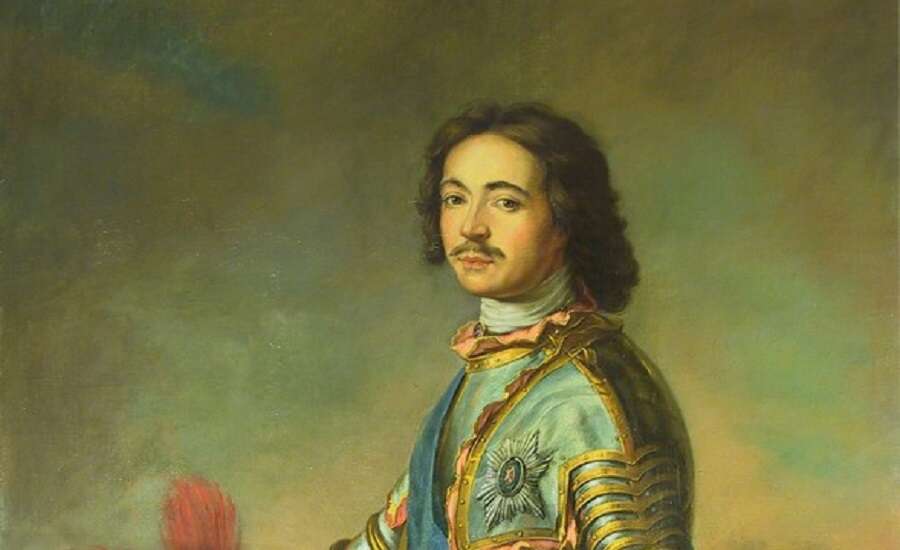
Portrait of Emperor Peter I (the Great) by Petrov-Maslakov
Born: May 30 (June 9), 1672, Moscow. Died: January 28 (February 8), 1725, St. Petersburg.
Crowned tzar of Russia on April 27, 1682; became Emperor of Russia on October 22, 1721.
Peter was a grandson of Tzar Michael Romanov (who was chosen to be a Tzar in 1613). In 1682, at the age of 10, Peter was proclaimed Tzar, but due to a power struggle between different political forces he had to rule together with his brother Ivan under the patronage of his sister Sofia. In 1689, after the failure of a coup d'etat, Sofia was overthrown and exiled to a convent. When tzar Ivan died in 1696, Peter remained monarch and engineered a series of reforms that were to put Russia among the major European powers. Peter opened Russia to the West. He invited the best European engineers, shipbuilders, architects, craftsmen and merchants to come to Russia. Hundreds of Russians were sent to Europe to get the best education and learn different arts and crafts.
One of the Peter's main goals was to regain access to the Baltic Sea and Baltic trade. In 1700 he started the Northern War with Sweden, which lasted for 21 years. In the course of the war St. Petersburg was founded (1703) in the Neva River delta. At the end of the war Russia was victorious and conquered the vast lands on the Baltic coast. Russia gained access to European trade and St. Petersburg became her major sea port.
In 1712 Peter the Great moved the Russian capital to St. Petersburg and continued paying special attention to the swift construction of the city - his European "paradise". When the Northern War ended in 1721 Russia was declared an Empire and Peter the Great proclaimed himself its Emperor. Meanwhile, Peter continued his political and economic reforms. He reorganized the government: established the Senat as the highest government institution and 10 semi-ministries "kollegii". Peter introduced a new poll tax, which brought him funding for an active foreign policy and for boosting national manufacturing and trade. The "tzar-reformer" was first to organize a Russian regular army and build the Russian navy (he was also an experienced shipbuilder). Peter the Great was buried in the Peter and Paul Cathedral and the people still bring flowers to his tomb.
Peter's personality has raised many questions for almost three centuries. He was a big strong man (6' 8'' inches - 2.04 meters) who unlike previous Russian monarchs was not afraid of physical labor. He was an experienced army officer and navy admiral, a skilful shipbuilder and an amazingly energetic personality. It has to be said that Peter was also very cruel. Several coup attempts against him ended with mass executions. He personally interrogated his own son Alexei, suspected of plotting against him (Alexei was the first inmate of a high security political jail in the Peter and Paul fortress). Nevertheless, the scale of Peter's personality and massive reforms have inspired generations of historians, writers and ordinary people.
There are many monuments to Peter the Great in St. Petersburg. Among the most prominent are the "Bronze Horseman" and another equestrian monument in front of the Mikhailovsky Castle.
Join us on Facebook
We invite you to become a fan of our company on Facebook and read Russian news and travel stories. To become a fan, click here.
Join our own Russian Travel, Culture and Literature Club on Facebook. The club was created to be a place for everyone with an interest in Russia to get to know each other and share experiences, stories, pictures and advice. To join our club, please follow this link.